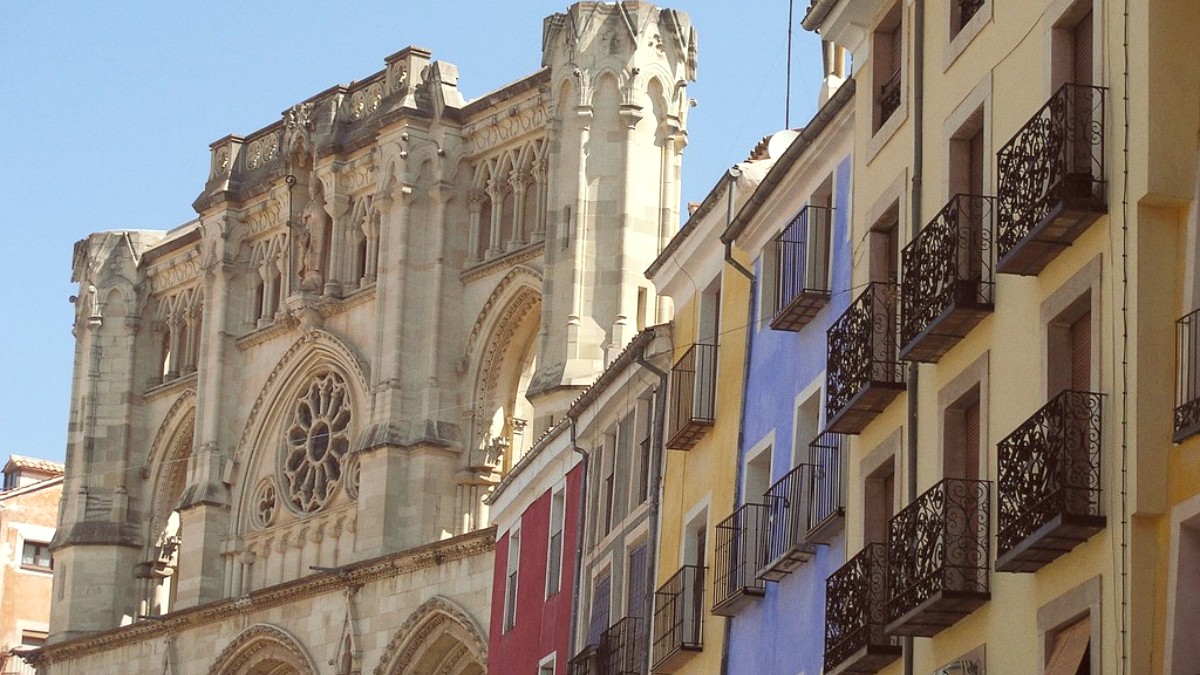
Castilla La Mancha, Spain
The historic city center is around 946 meters (3,104 feet) above sea level. City coordinates are approximately 40.07° N, 2.13° W. This central Spanish position offers accessibility from Madrid and Valencia, yet presents a distinct regional character. The terrain means visitors should prepare for walks with inclines and stairs when exploring the old town. The dramatic river valleys offer scenic walks and feature Cuenca’s iconic cliffside architecture.
Cuenca sits centrally within Spain, easily reached from major cities like Madrid and Valencia. Visitors should anticipate walks involving inclines and stairs when navigating the old town. The challenging terrain includes steep river valleys.
The city's dramatic river valleys set the stage for its iconic cliffside architecture.
Cuenca's historical importance stems mainly from its medieval fortified city. UNESCO declared it a World Heritage Site in 1996. This designation highlights its unique urban landscape and the preservation of its historical fabric. The city is known for its "Casas Colgadas" (Hanging Houses), clinging to the cliffs. These homes are a rare display of medieval engineering and architecture.
Their origins trace back to an Islamic fortress, Kunka, established in the 9th century. This early period shaped the city's layout and defensive structures. Alfonso VIII of Castile conquered Cuenca in 1177, transforming it into an important royal city and a bishopric during the Middle Ages. The city became a center for wool trading, bringing wealth and influence. During the Renaissance, Cuenca continued to thrive. Evidence of this period is clear in its impressive Gothic cathedral and numerous churches and convents throughout the city. These buildings showcase architectural styles and artistic movements that molded Spain over centuries. The city’s history appears at every turn, from ancient walls to grand plazas, offering a rich narrative for those walking its streets.
Islamic fortress (Kunka) established, shaping city layout.
Alfonso VIII of Castile conquers Cuenca; city becomes royal and a bishopric.
Center for wool trading, bringing wealth.
Continued flourishing with impressive Gothic architecture.
UNESCO World Heritage Site designation for unique urban landscape.
The city’s history appears at every turn, from ancient walls to grand plazas. Buildings throughout the city showcase architectural styles and artistic movements that molded Spain over centuries.
The iconic "Hanging Houses" cling to the cliffs, representing a rare display of medieval engineering.
An impressive Gothic cathedral is a testament to the city's Renaissance flourishing.
Cuenca combines a historical urban experience with easy access to stunning natural landscapes.
Cuenca is a captivating medieval fortress city in Castilla-La Mancha. It earns renown for its dramatic cliffside architecture, including the iconic Hanging Houses. UNESCO noted its distinct character, designating it a World Heritage site. The city presents a rich blend of history, art, and natural beauty. Its deep river gorges and the surrounding natural parks add to its allure.
The city proper numbers approximately 53,000 residents as of 2023. This creates a welcoming, manageable size for visitors, large enough for amenities but small enough to feel intimate.
Approximately 53,000 residents (2023).
Casas Colgadas, Cuenca Cathedral, Museo de Arte Abstracto Español, Puente de San Pablo.
Serranía de Cuenca for nature exploration.
Cuenca's main attractions draw visitors from around the globe, presenting a historical urban journey with convenient access to stunning natural landscapes.